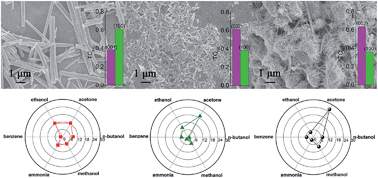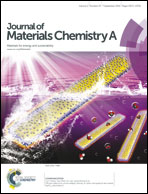Exposed facets induced enhanced acetone selective sensing property of nanostructured tungsten oxide†
Abstract
WO3 nanorods with exposed (100) and (002) facets were fabricated via a hydrothermal route using different directing agents. Microspheres that were assembled randomly by WO3 nanorods with exposed (002) facets were porous with a specific surface area of 62.2 m2 g−1. Acetone gas sensing properties of the as-prepared sensors were investigated for the breath diagnosis of diabetes. The acetone detection limit of WO3 microspheres was 0.25 ppm, and the response (Ra/Rg) to 1 ppm acetone was 3.53 operated at 230 °C with a response and recovery time of 9 and 14 s, respectively. WO3 samples with exposed (002) facets exhibited better acetone sensitivity and selectivity than those with (100) facets. The sensing mechanism was discussed in detail. Because of the asymmetric distribution of unsaturated coordinated O atoms in the O-terminated (002) facets, the surface had an extent of polarization. Induced local electric dipole moment contributed to easy adsorption and reaction between the (002) facets and acetone molecules with a large dipole moment at low working temperatures. Room temperature PL spectra clearly displayed that the WO3 samples exposed with (002) facets had numerous oxygen vacancies and defects, resulting in excellent acetone sensing properties.


 Please wait while we load your content...
Please wait while we load your content...